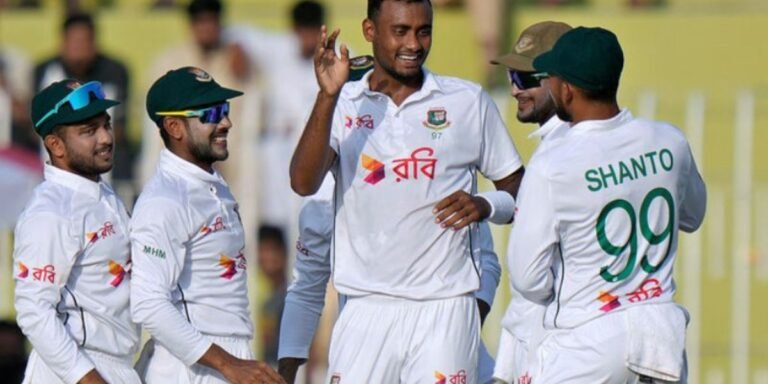India’s captain, Rohit Sharma, boldly decided to bowl first under overcast skies in Kanpur.
This choice was notable, as India hadn’t opted to bowl first in a home Test since 2015 when they played South Africa in Bengaluru.
Furthermore, it marked a historical moment for Green Park, as no team had chosen to bowl first on this ground since 1964 when Mansur Ali Khan Pataudi asked England to bat.
The toss itself was delayed by an hour due to a wet outfield resulting from overnight rain. Upon evaluating the conditions, Rohit Sharma observed that the pitch was softer than usual and had more grass than seen in Kanpur.
He believed these conditions would benefit India’s three seamers, offering them early assistance.
India entered the match with an unchanged lineup, signaling confidence in their previous performance.
Bangladesh, on the other hand, had a different take on the conditions. Their captain, Najmul Hossain Shanto, shared that they had planned to bat first regardless of the weather and pitch.
To support this strategy, Bangladesh selected a bowling attack featuring three spinners and two pace bowlers, showing their expectation that the pitch would favor spin later in the game.
Bangladesh made two changes to their squad, bringing Taijul Islam and Khaled Ahmed for Taskin Ahmed and Nahid Rana.
India’s lineup comprised a balanced mix of experience and young talent. Rohit Sharma led from the top, alongside Yashasvi Jaiswal, Shubman Gill, and the ever-reliable Virat Kohli, who formed a solid top order.
Taking the wicketkeeping duties, Rishabh Pant offered flexibility in the middle order, supported by KL Rahul’s adaptability.
All-rounders Ravindra Jadeja and R Ashwin brought depth in both batting and bowling. India’s pace attack, spearheaded by Jasprit Bumrah and Mohammed Siraj, with Akash Deep as the third seamer, aimed to take advantage of the favorable conditions.
Bangladesh’s lineup also showcased a blend of experience and youthful promise. Shadman Islam and Zakir Hasan were set to open, while Najmul Hossain Shanto held the crucial number three position.
Their middle order featured seasoned players like Mominul Haque, Mushfiqur Rahim, and Shakib Al Hasan, with Shakib playing a pivotal role as an all-rounder.
Taking on wicketkeeping responsibilities, Litton Das added more strength to the batting lineup.
Their bowling options were a balanced mix of spin and pace, with Mehidy Hasan Miraz, Taijul Islam, and Khaled Ahmed teaming up with Hasan Mahmud to provide variety.
As the match unfolded, it became evident that the contrasting approaches of the two teams would shape the contest.
India’s decision to bowl first hinged on extracting early movement and exploiting the conditions, while Bangladesh hoped their spin-heavy attack would come into play as the match progressed.
Both sides were determined to execute their plans effectively, knowing that the outcome would depend on who adapted better.
Weather and pitch conditions played a pivotal role, setting the stage for an intense battle at Green Park. Both teams had a lot riding on the result.



